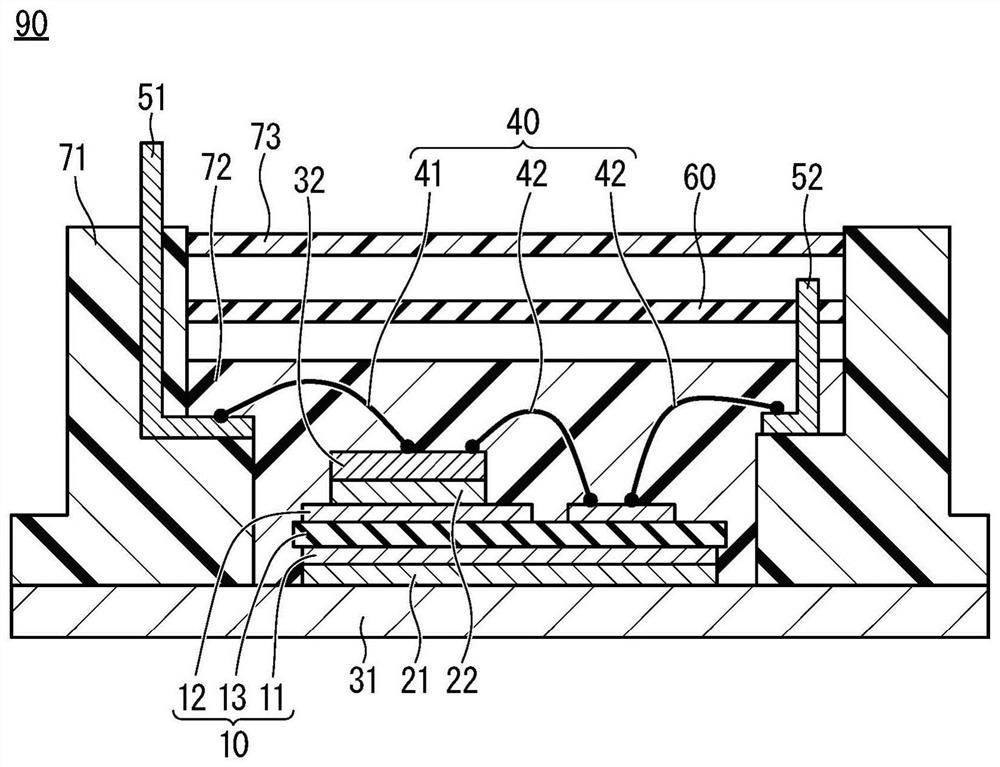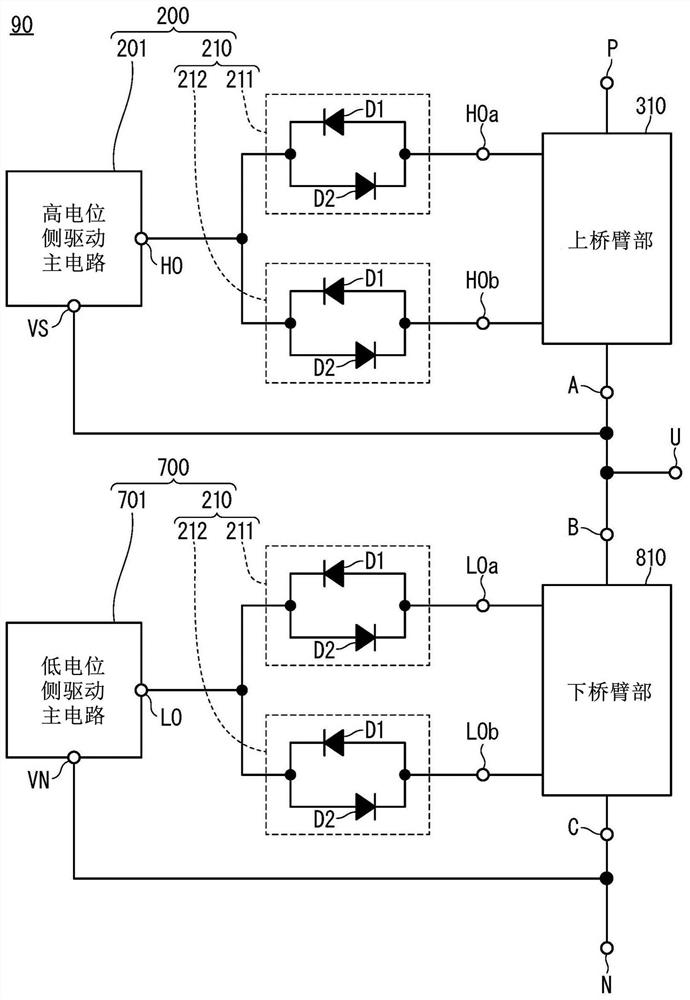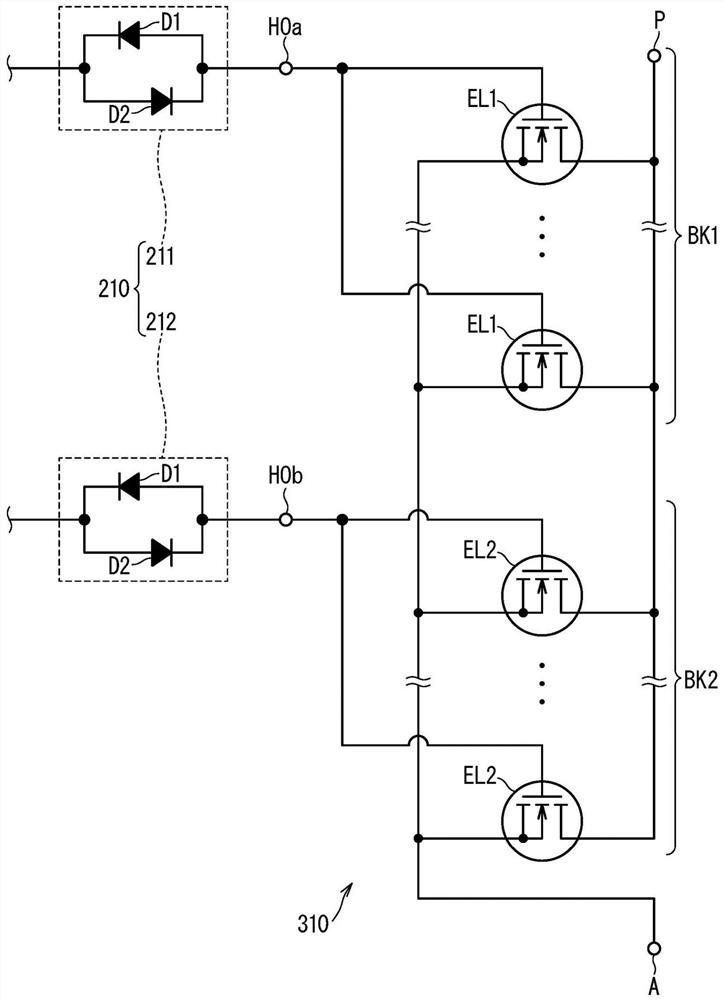Semiconductor device
A technology for semiconductors and components, applied in the field of semiconductor devices, can solve the problems of complex structure of semiconductor devices and the like
- Summary
- Abstract
- Description
- Claims
- Application Information
AI Technical Summary
Problems solved by technology
Method used
Image
Examples
Embodiment approach 1
[0018] figure 1 It is a cross-sectional view showing an example of the structure of the semiconductor device 90 according to the first embodiment. The semiconductor device 90 has an insulating substrate 10 (first substrate), a soldering portion 21, a soldering portion 22, a base plate 31, at least one semiconductor chip 32 (semiconductor component), a plurality of wires 40, a plurality of main electrodes 51, and drive electrodes. 52. Printed wiring board 60 (second substrate), case 71, sealing material 72, and cover 73. The insulating substrate 10 includes: an insulating plate 13 having a first surface and a second surface (a lower surface and an upper surface in the figure); a conductor layer 11 provided on the first surface; and a conductor layer 12 provided on the second surface. 2 sides, with pattern. The plurality of wires 40 includes a main wire 41 and a driving wire 42 .
[0019] The housing 71 has a space closed by combining the base plate 31 and the cover 73 , and ...
Embodiment approach 2
[0035] refer to Figure 5 , the semiconductor device according to Embodiment 2 has a plurality of insertion circuits 220 instead of a plurality of insertion circuits 210 ( image 3 : Embodiment 1). Each of the plurality of insertion circuits 220, in other words, each of the first insertion circuit 221 and the second insertion circuit 222 includes a first resistance element R1 connected in series with the first diode D1 and in parallel with the second diode D2, and a first resistance element R1 connected in series with the second diode D2 and in parallel with the second diode D2. The first diode D1 is connected in parallel to the second resistance element R2. In addition, since the structure other than this is substantially the same as the structure of Embodiment 1 mentioned above, the same code|symbol is attached|subjected to the same or corresponding element, and the description is not repeated.
[0036] According to this embodiment, when the current caused by the parasitic...
Embodiment approach 3
[0039] refer to Image 6 , the semiconductor device according to Embodiment 3 has an upper arm portion 320 instead of the upper arm portion 310 ( Figure 5 : Embodiment 2). In the upper arm portion 320 , a gate resistance element RG is provided between the insertion circuit 220 of the driving circuit and each of the plurality of semiconductor elements EL. Furthermore, although illustration is omitted, a gate resistance element RG is similarly provided in the lower arm portion. The gate resistance element RG may be a resistance element built into the semiconductor chip 32 on which the semiconductor element EL is formed, or may be a resistance element added separately from the semiconductor chip.
[0040] According to the present embodiment, the plurality of first semiconductor elements EL1 and the plurality of second semiconductor elements EL2 are separated by the gate resistance element RG. Therefore, even if the number of the plurality of first semiconductor elements EL1 a...
PUM
 Login to View More
Login to View More Abstract
Description
Claims
Application Information
 Login to View More
Login to View More - R&D
- Intellectual Property
- Life Sciences
- Materials
- Tech Scout
- Unparalleled Data Quality
- Higher Quality Content
- 60% Fewer Hallucinations
Browse by: Latest US Patents, China's latest patents, Technical Efficacy Thesaurus, Application Domain, Technology Topic, Popular Technical Reports.
© 2025 PatSnap. All rights reserved.Legal|Privacy policy|Modern Slavery Act Transparency Statement|Sitemap|About US| Contact US: help@patsnap.com



